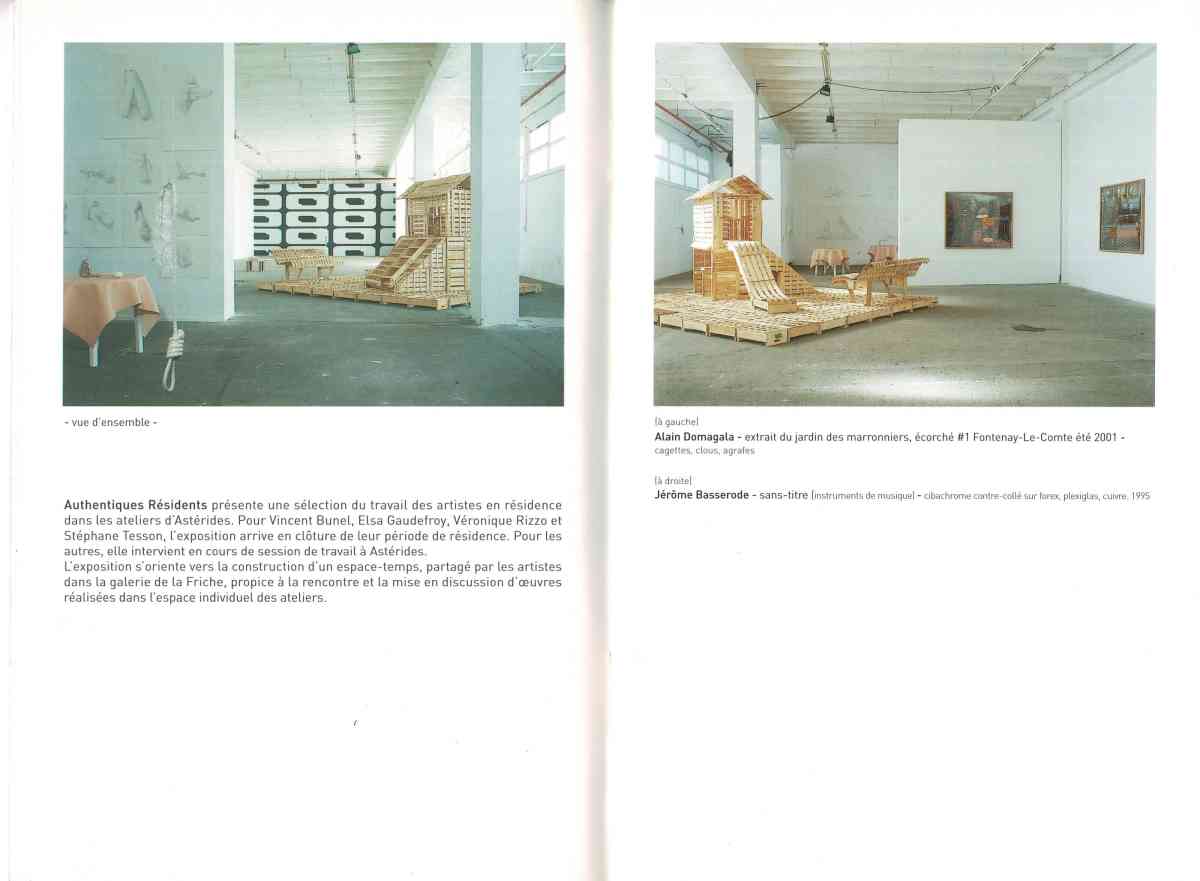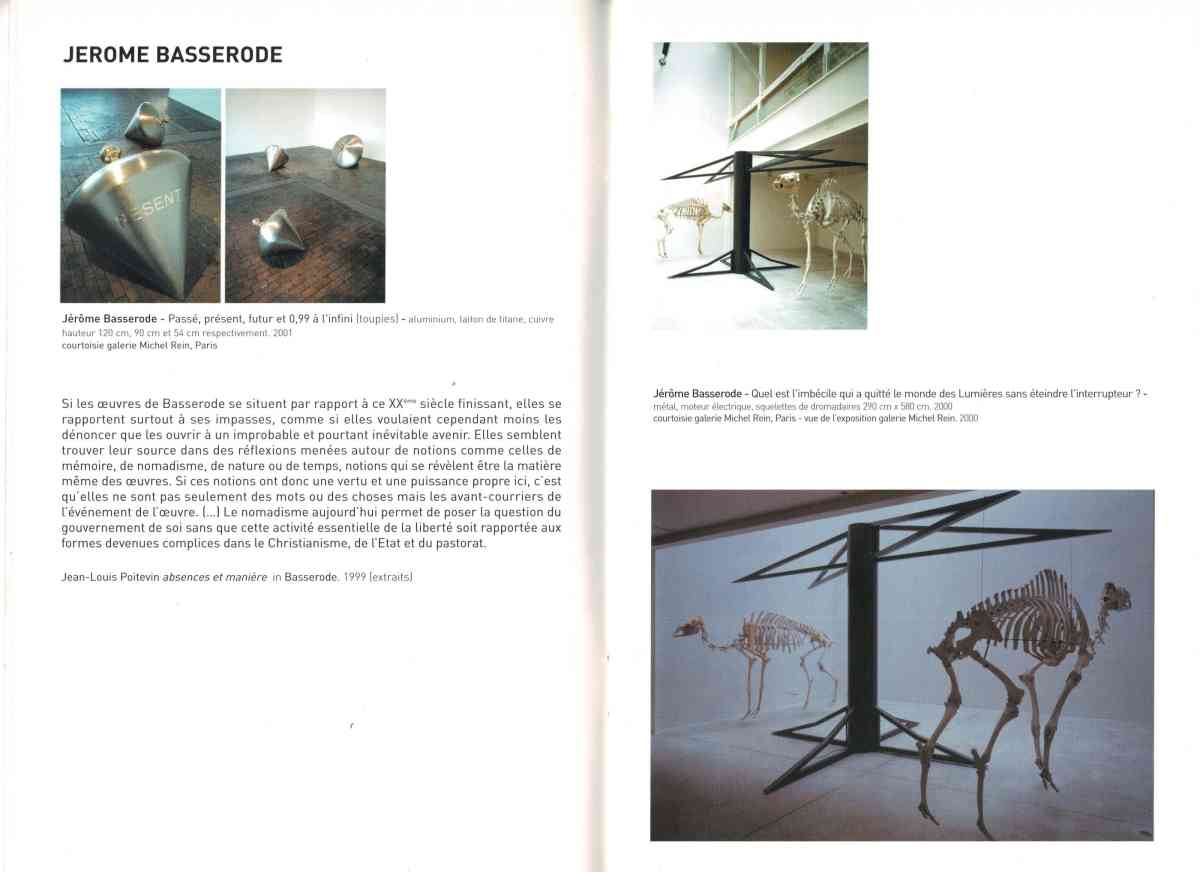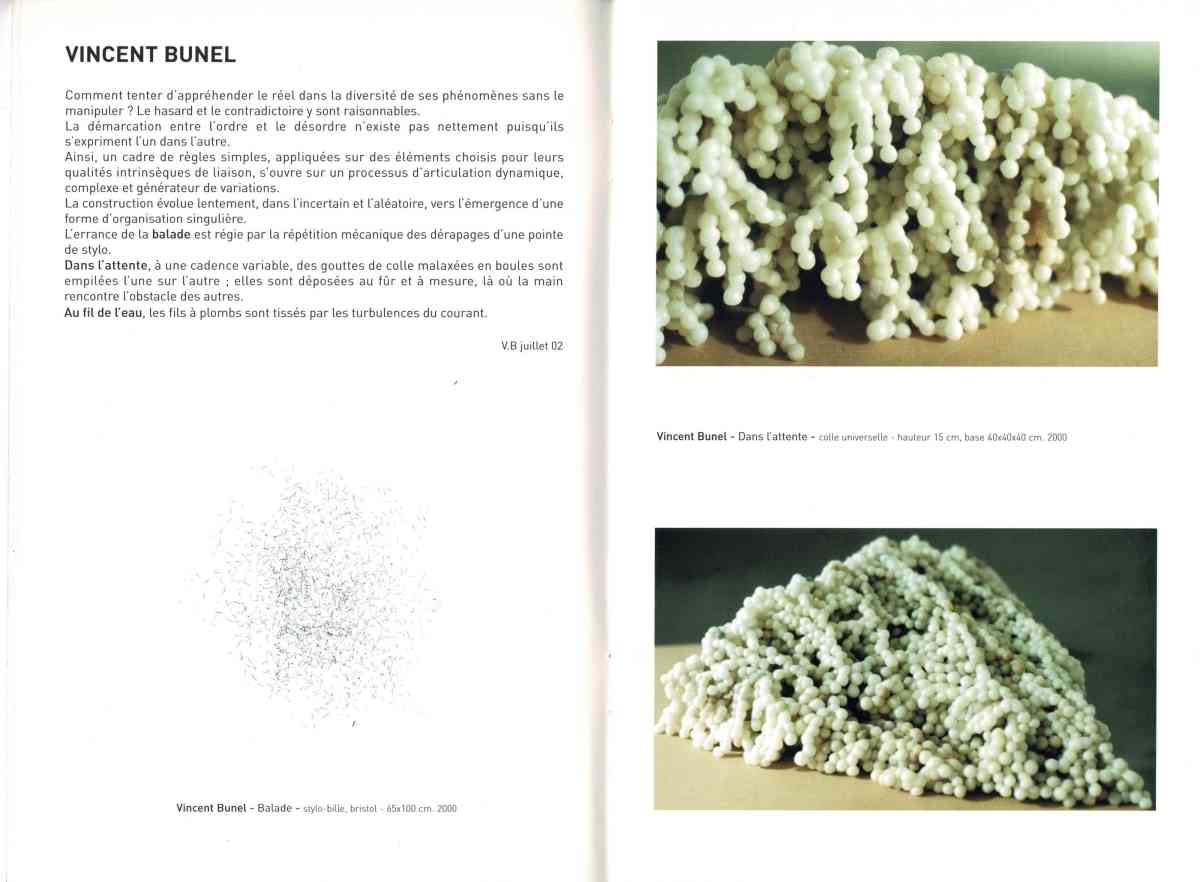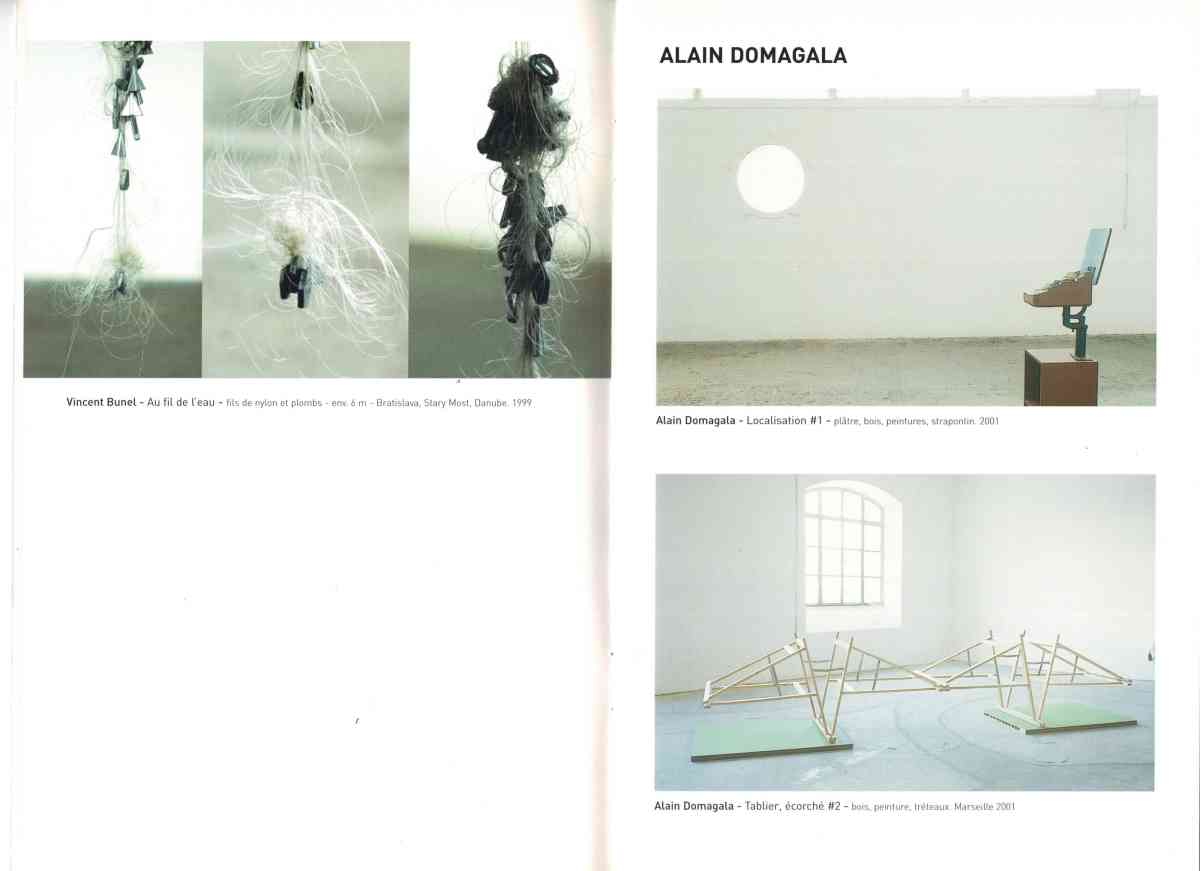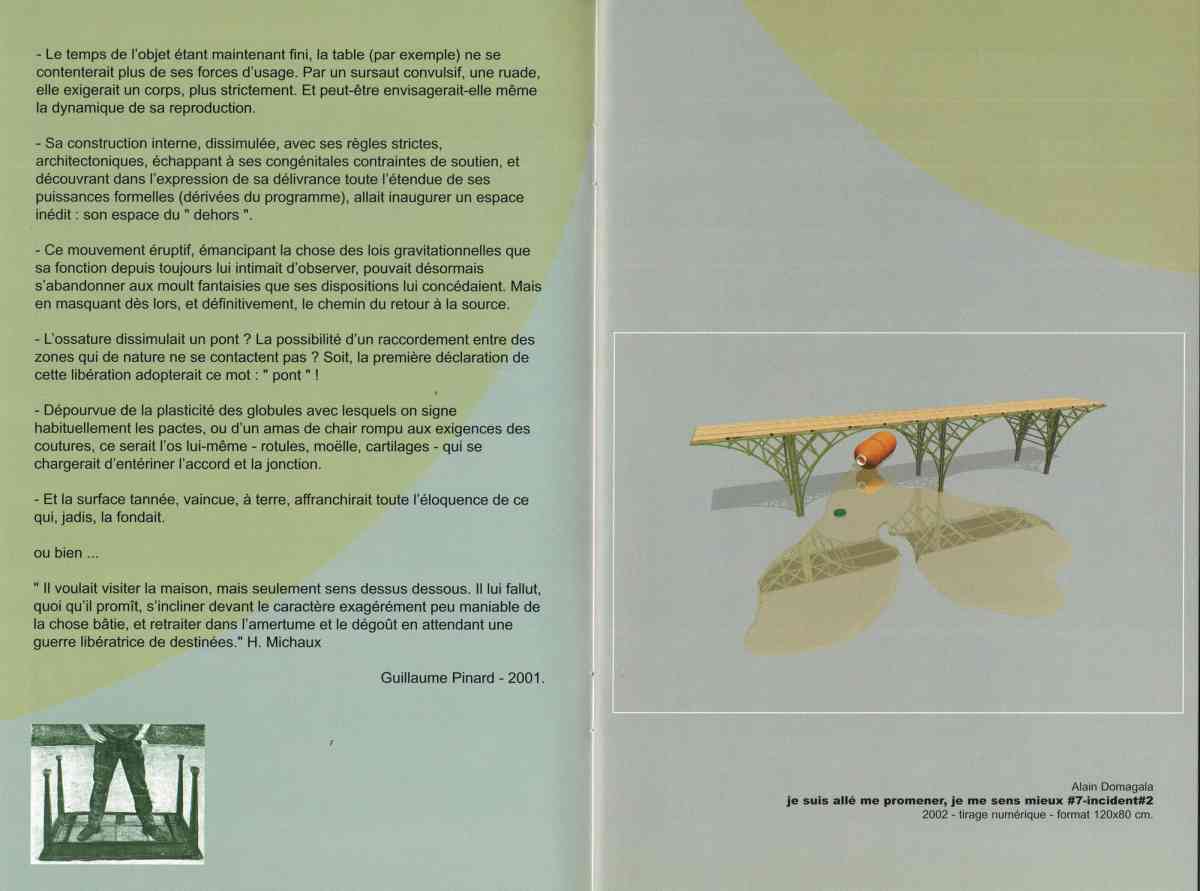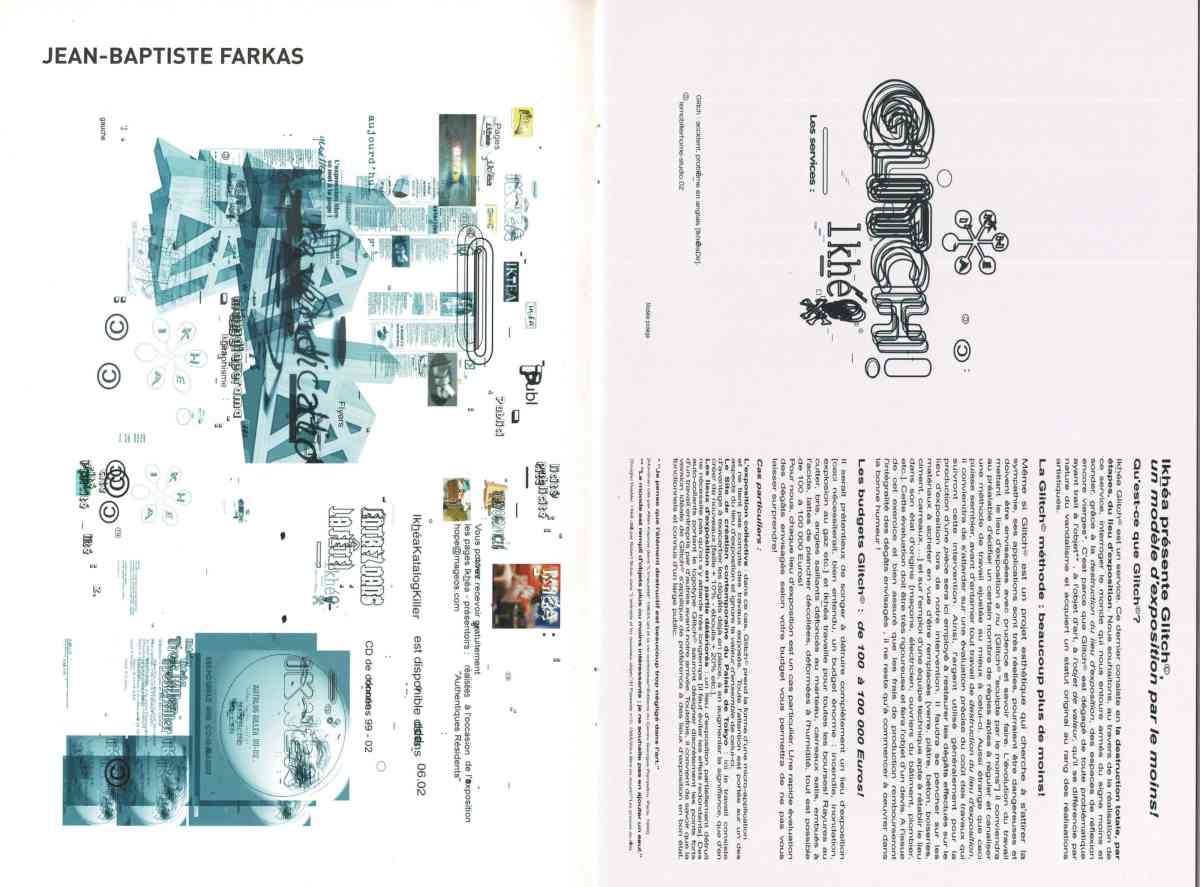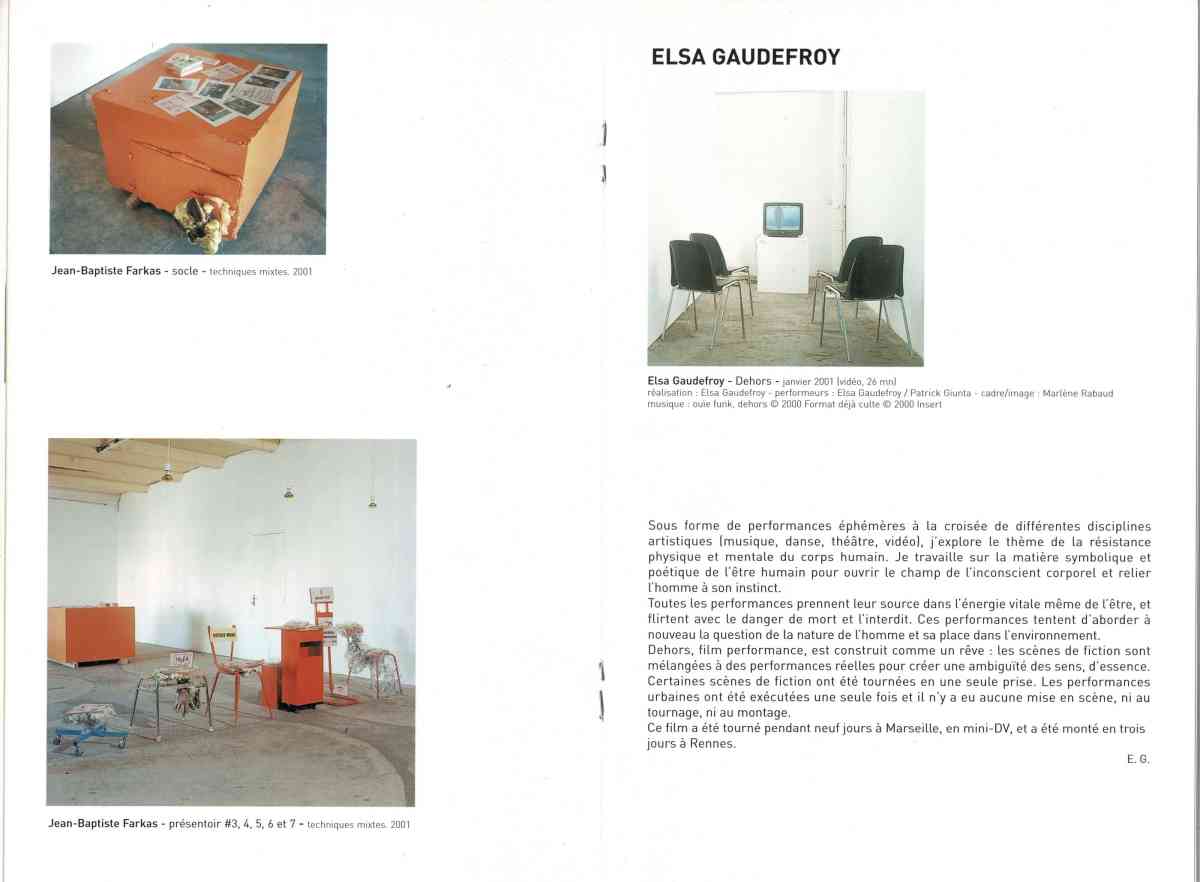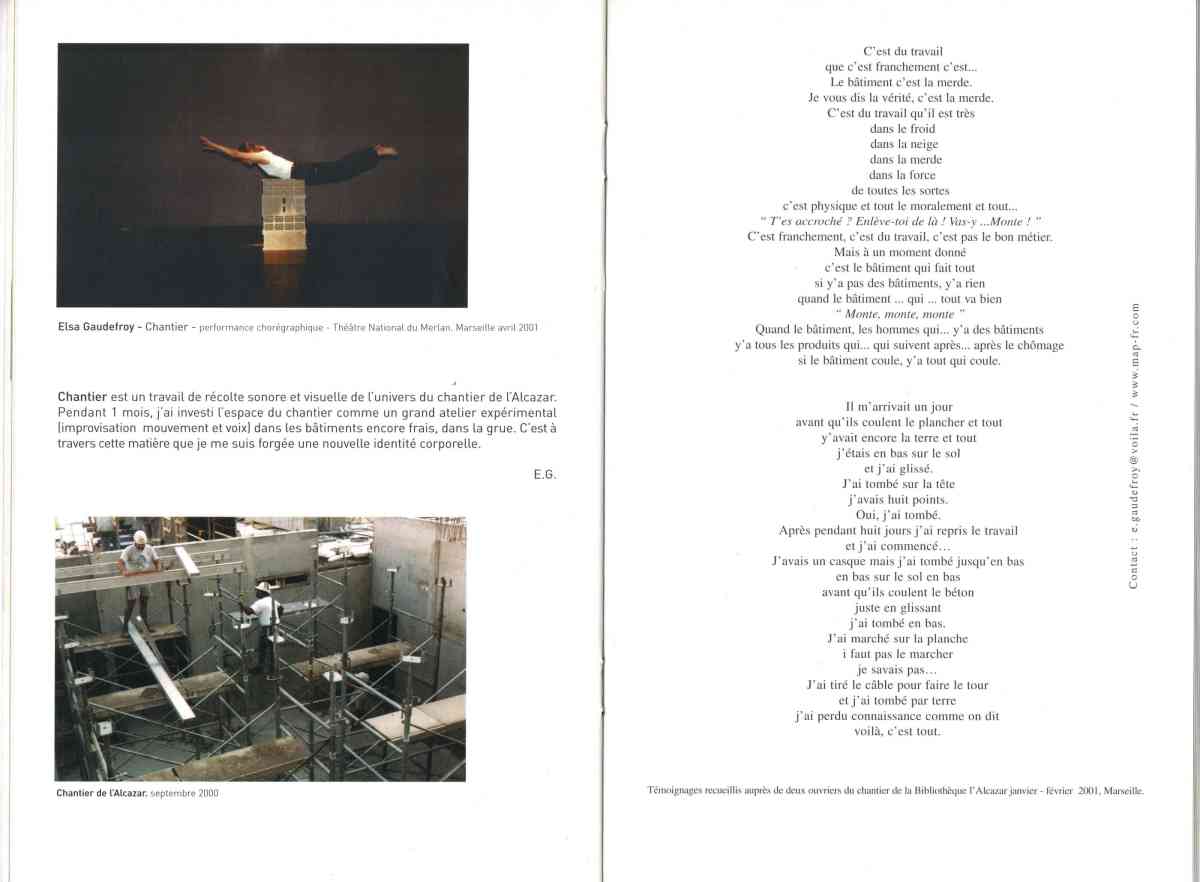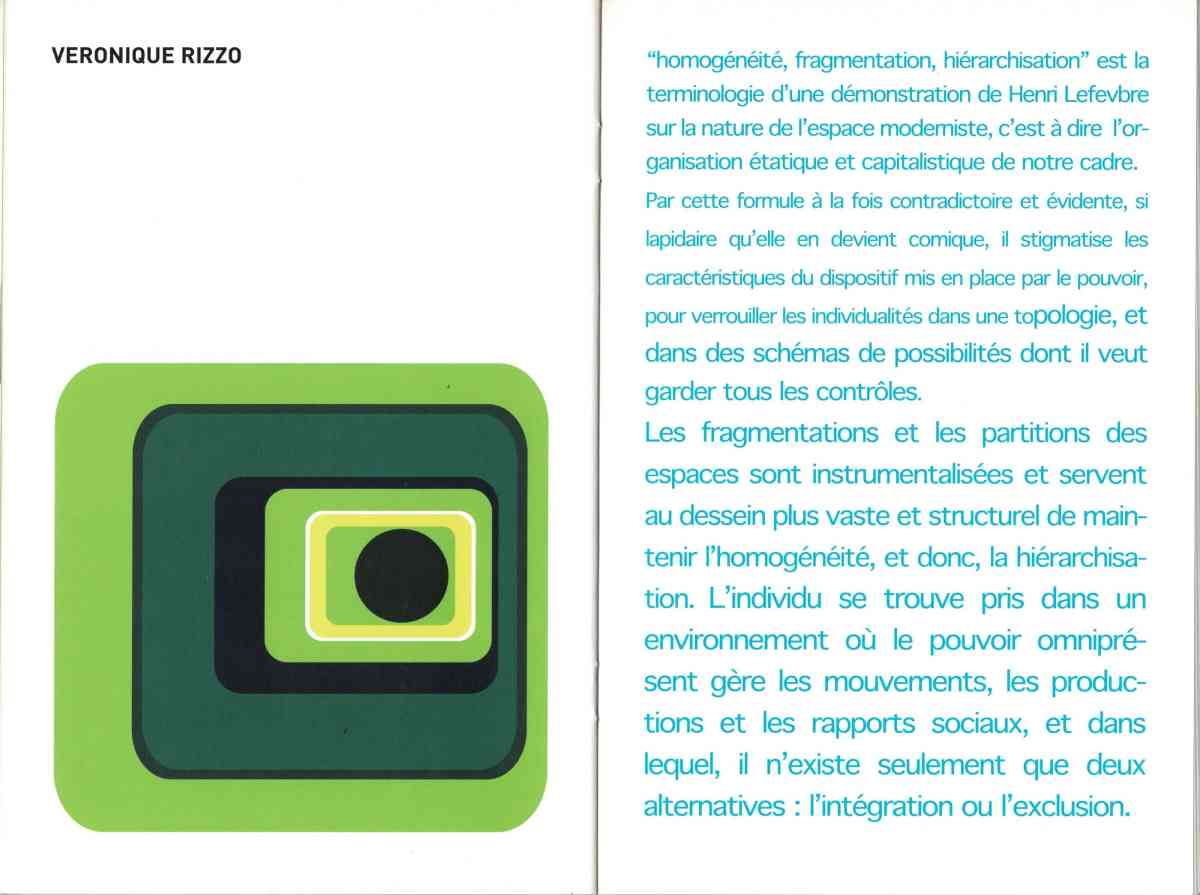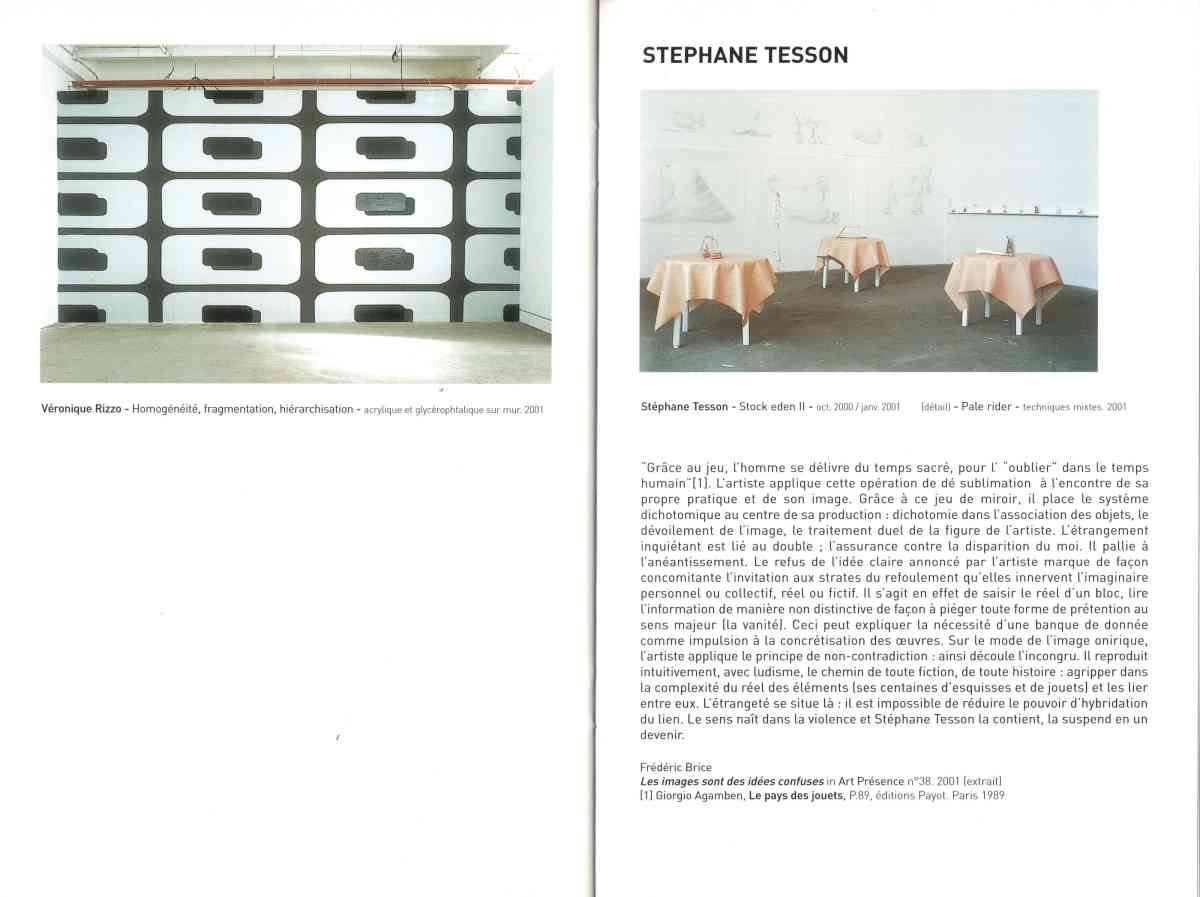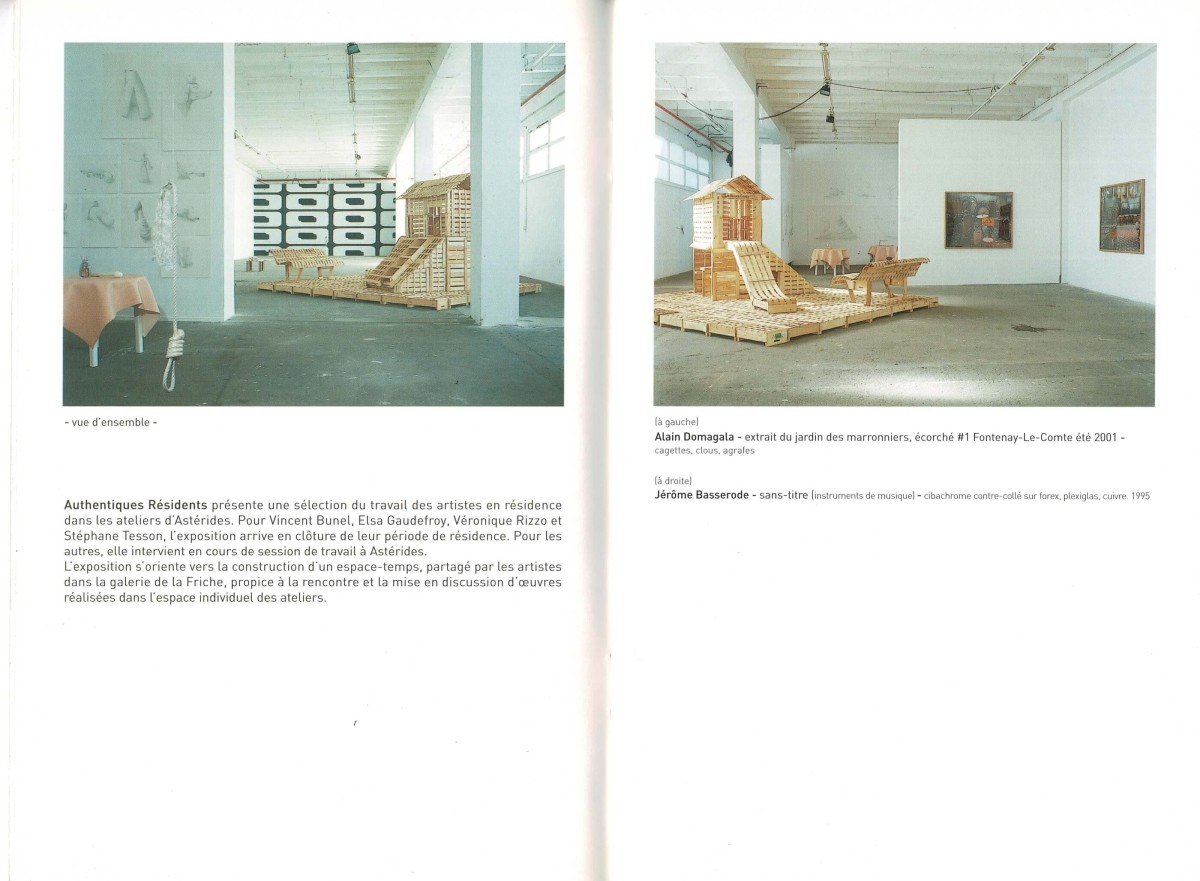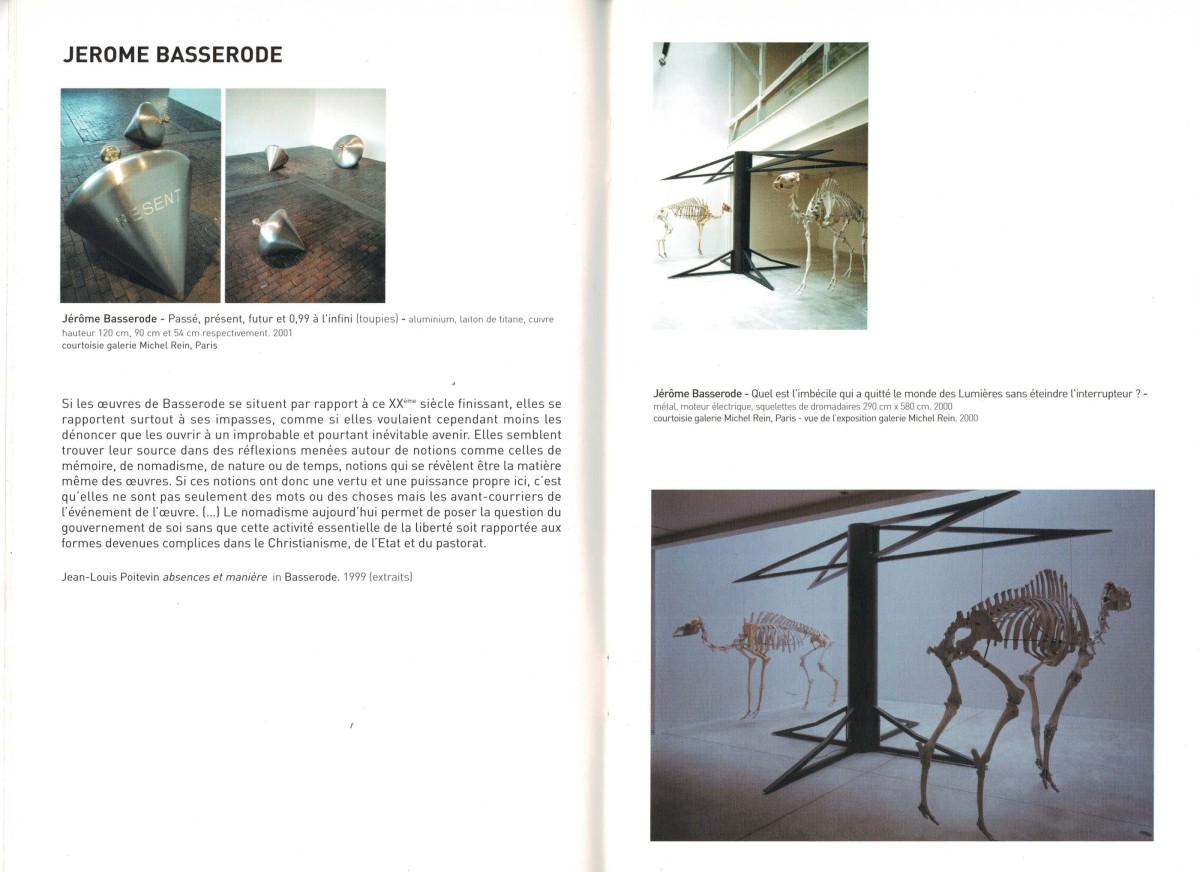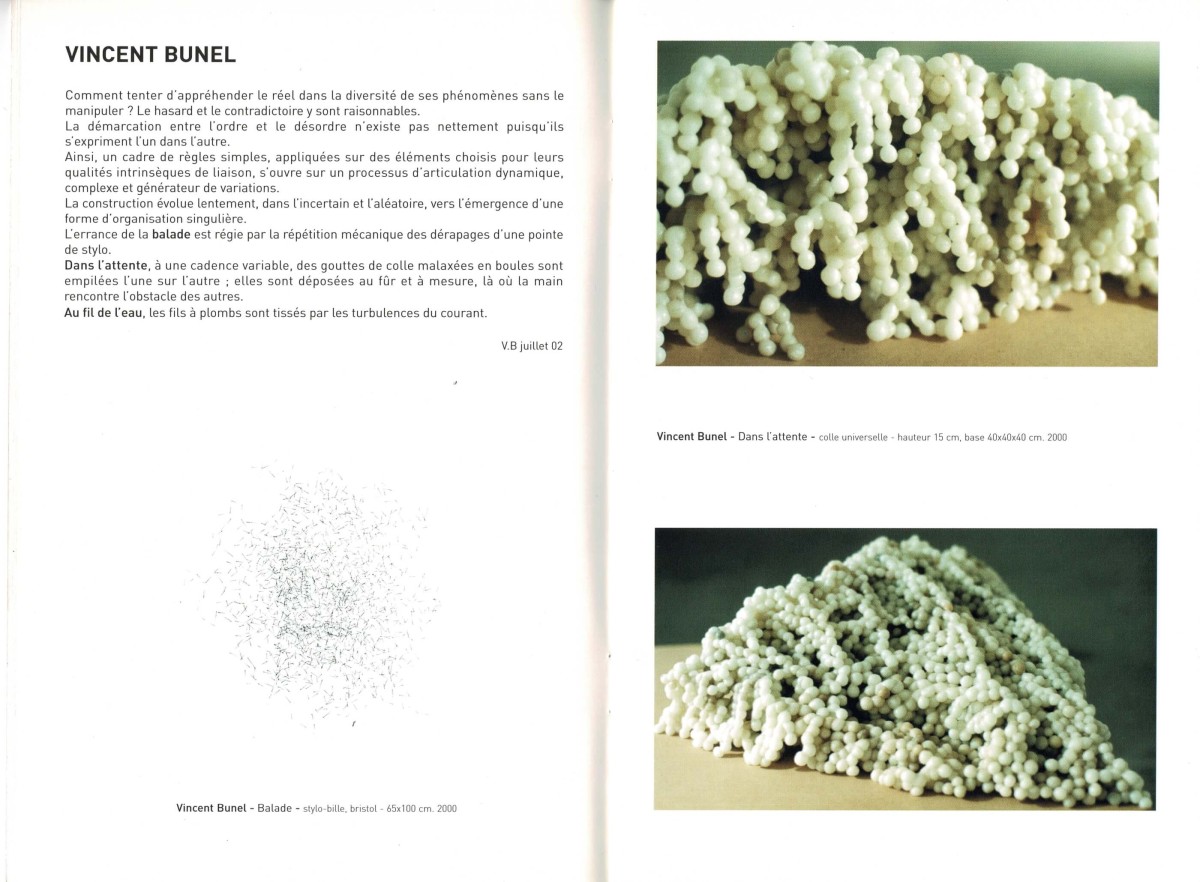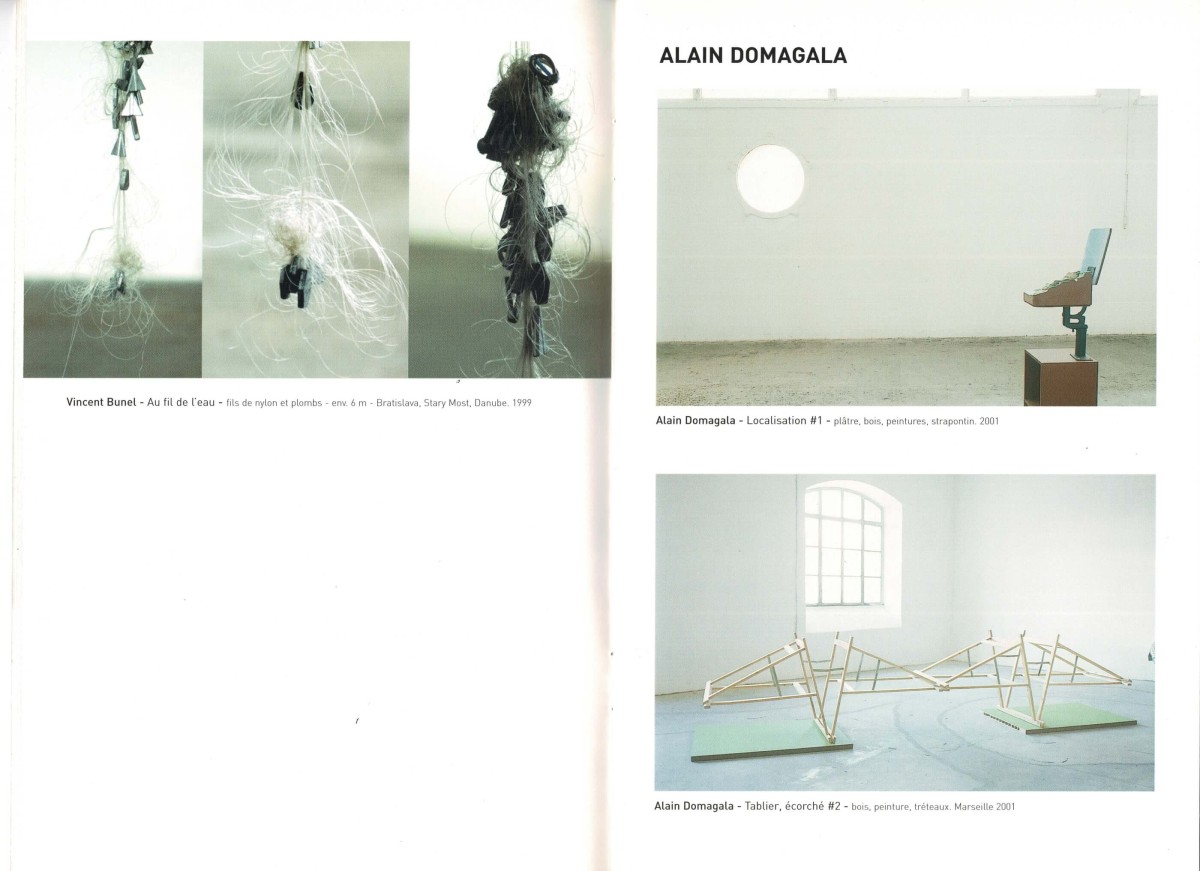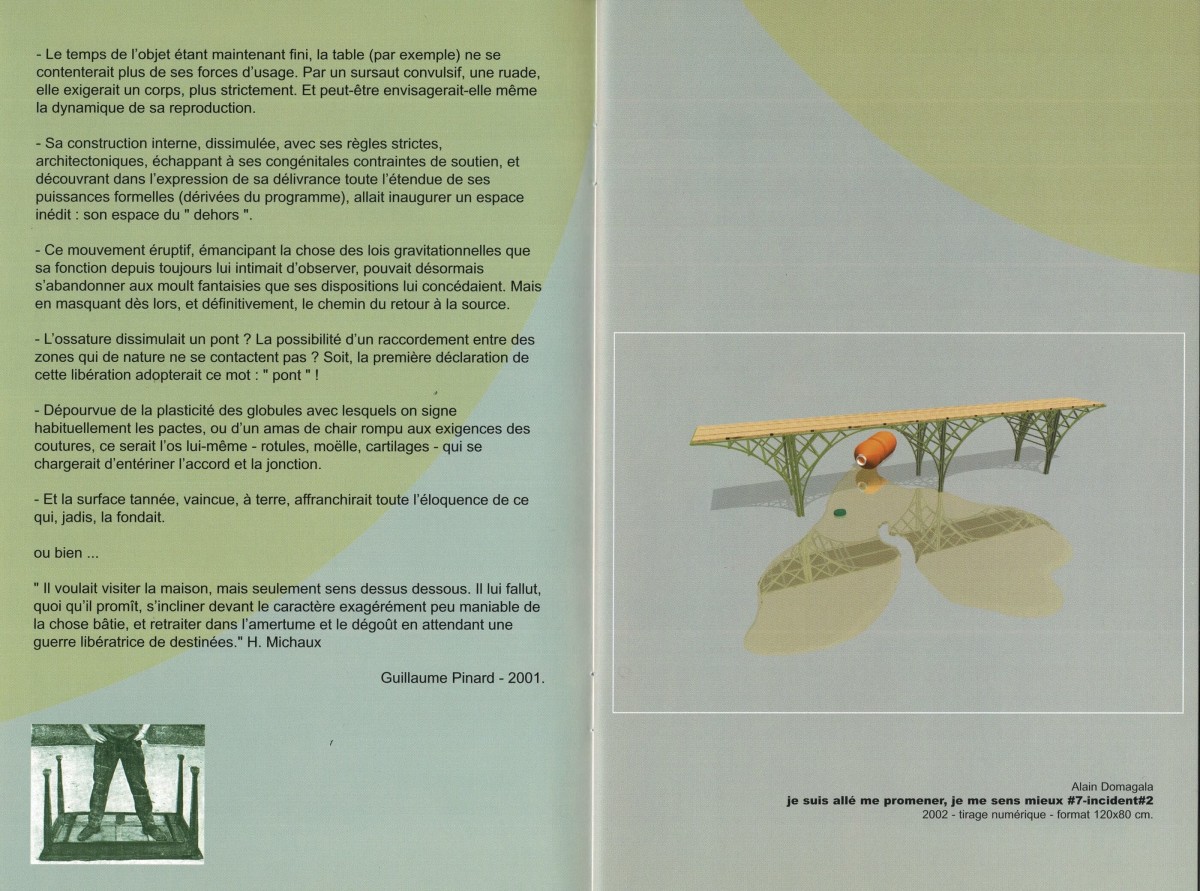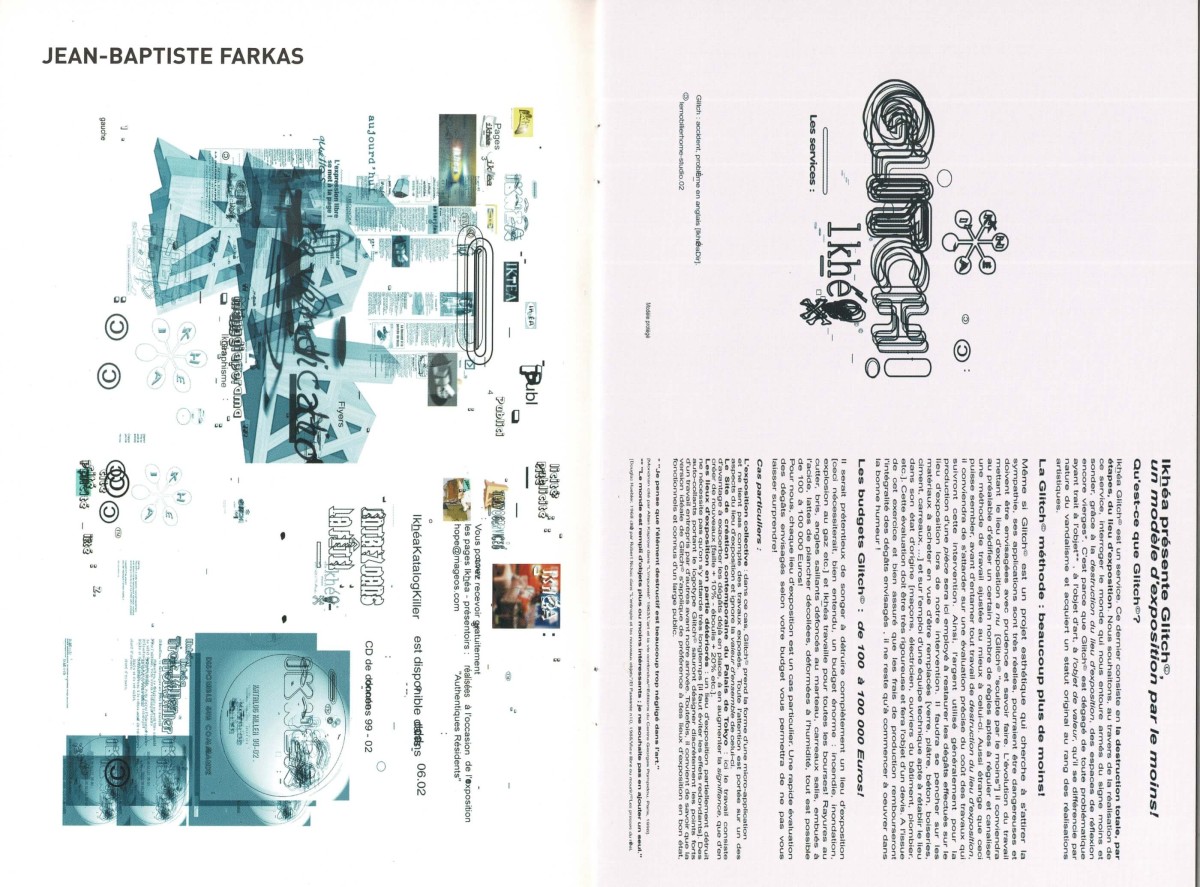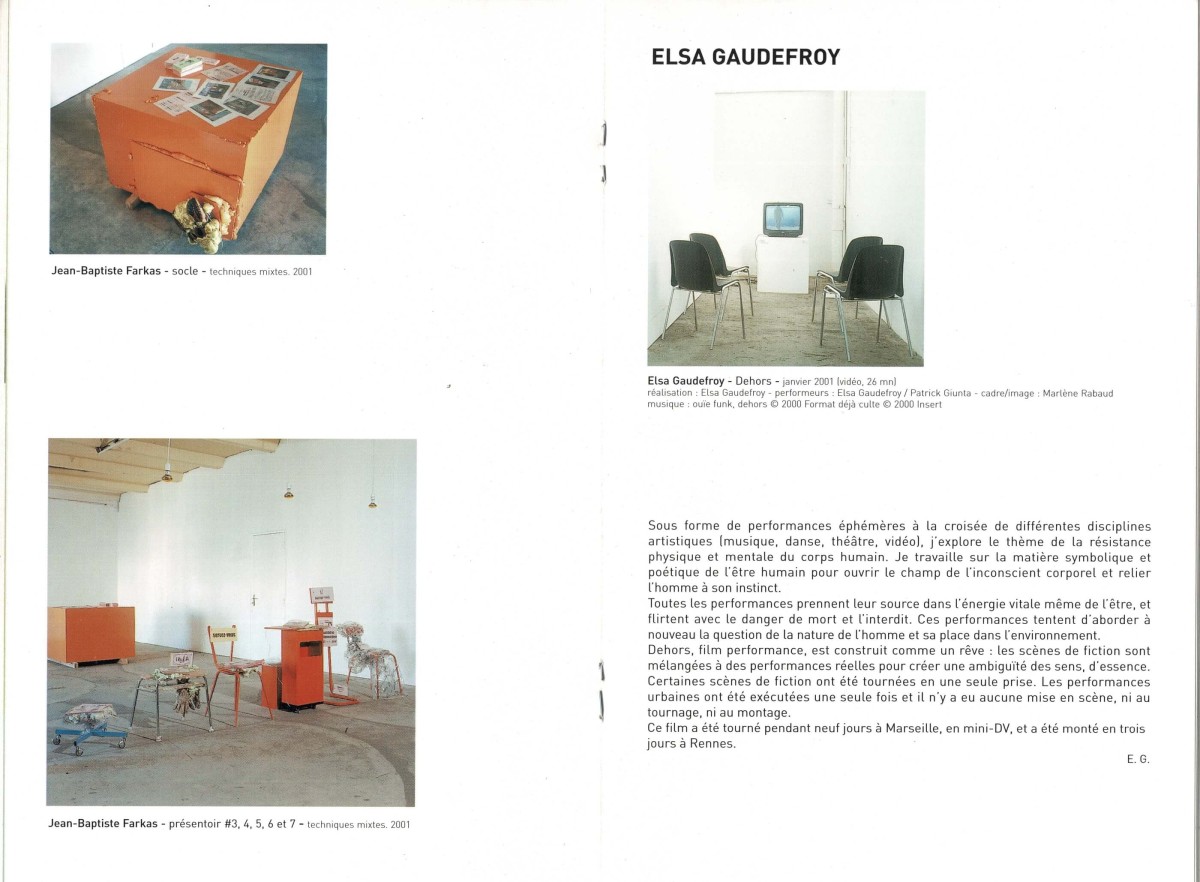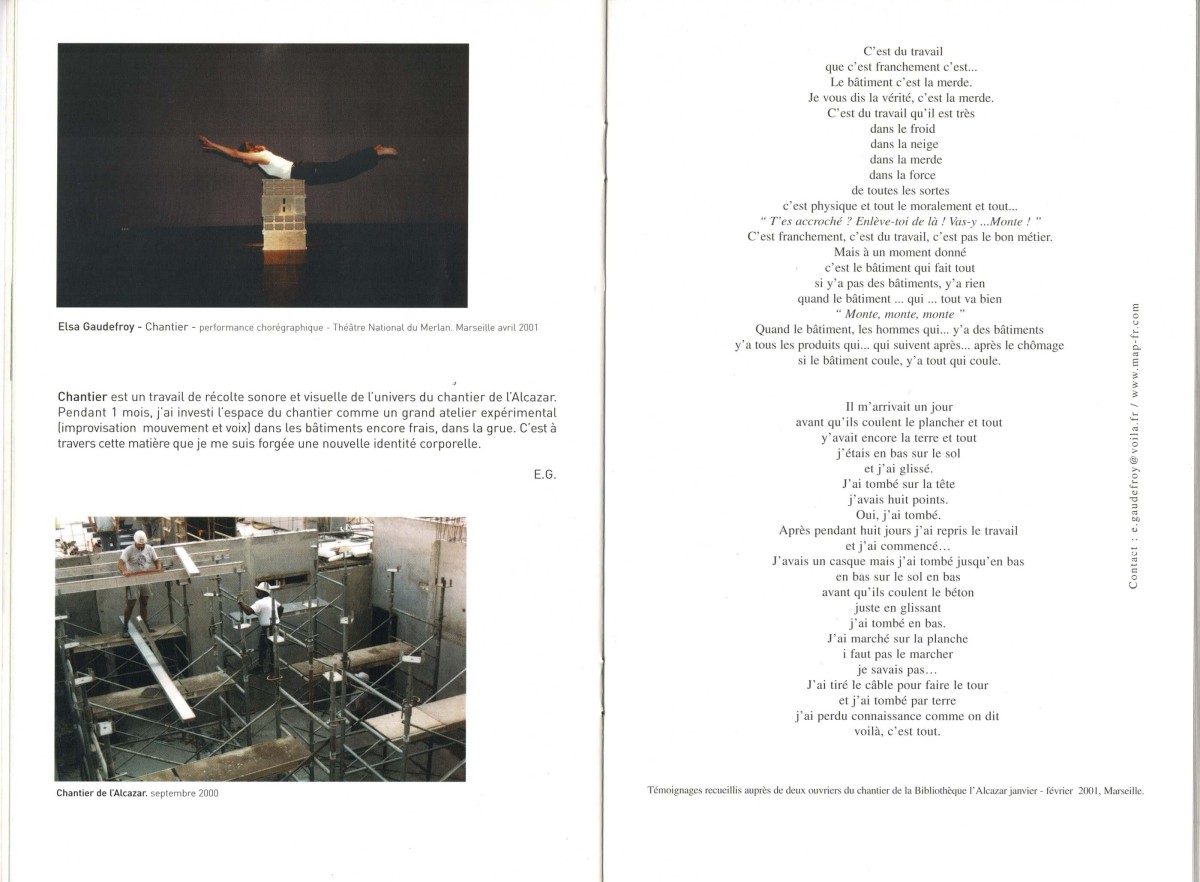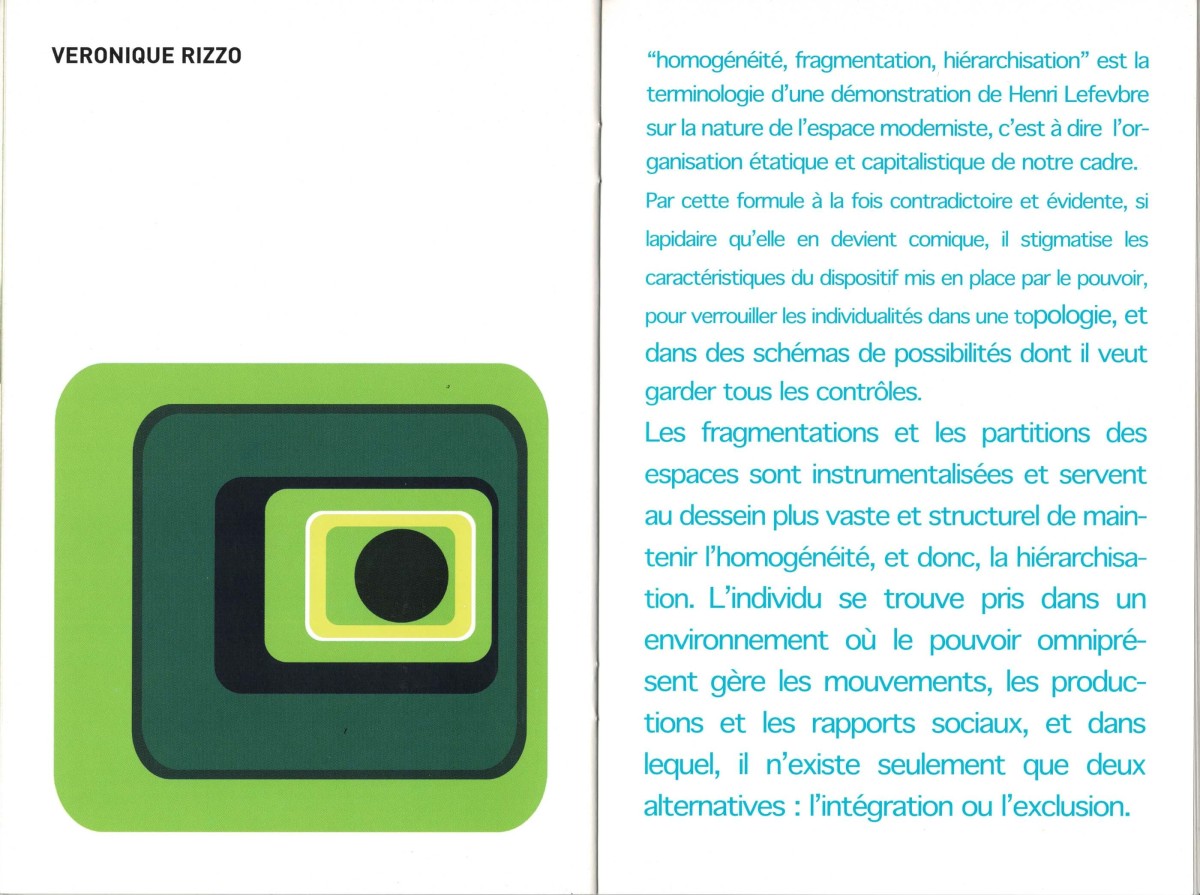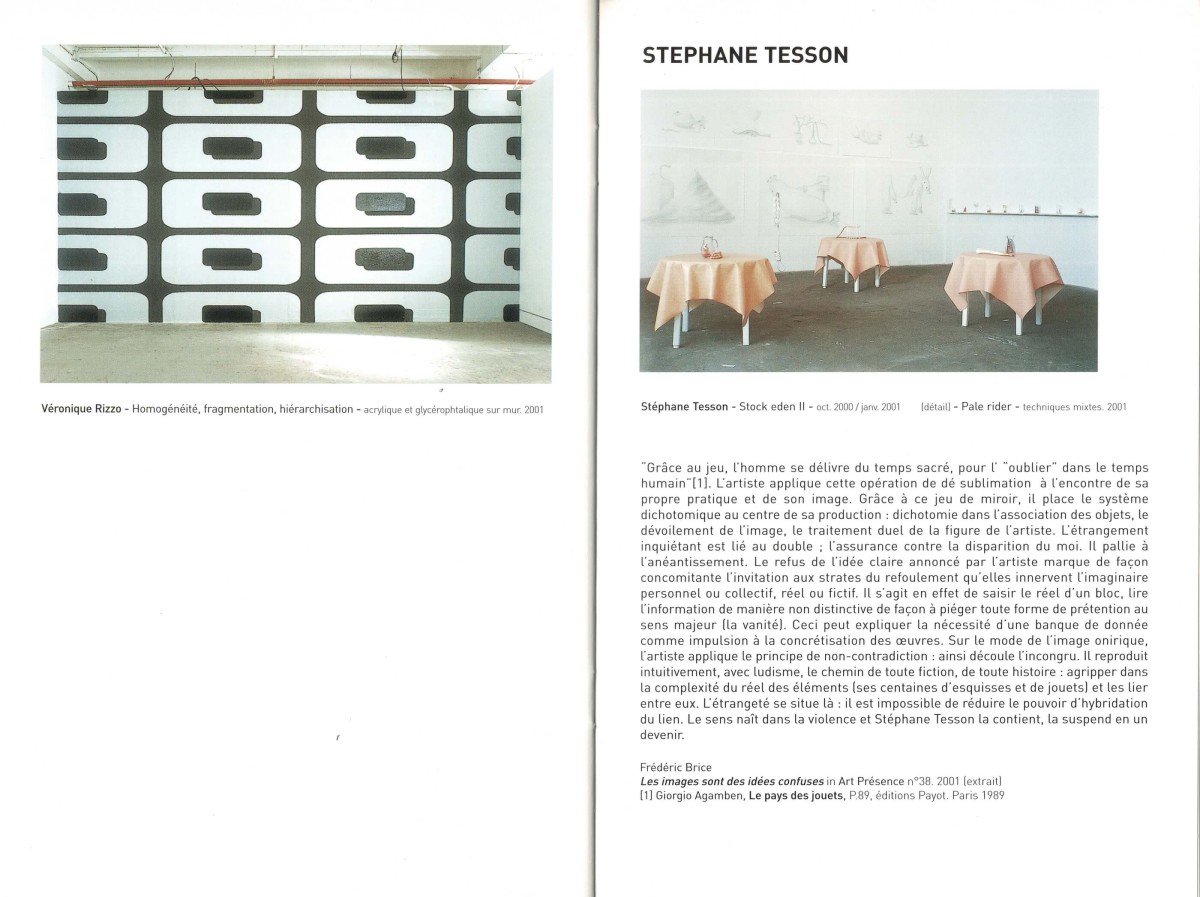Authentiques Résidents
Collective show with Jérome Basserode, Vincent Bunel, Alain Domagala, Jean-Baptiste Farkas, Elsa Gaudefroy, Véronique Rizzo and Stéphane Tesson
February 2 - March 3, 2001
Galerie de la Friche la Belle de Mai, Marseille
After the thematic exhibition ART AND COMIC STRIPS held last November, ASTERIDES turns with this new proposal toward the other focus of its exhibition program: the presentation of a selection of works by artists in residence in its studios. For Vincent Bunel, Elsa Gaudefroy, Véronique Rizzo, and Stéphane Tesson, the exhibition marks the end of their residency period within the association. For the others, it takes place during their working sessions at ASTERIDES: Basserode will be present until July, Alain Domagala until April, and Jean-Baptiste Farkas until the end of February. Authentiques Résidents is aimed at constructing a shared space-time among the artists in the Galerie de la Friche, conducive to meeting and discussing works created in the individual studio spaces.
Jérôme Basserode
If Basserode’s works are positioned in relation to the closing twentieth century, they refer above all to its dead ends, as if they were less intent on denouncing them than on opening them to an improbable yet inevitable future. They seem to find their source in reflections on notions such as memory, nomadism, nature, or time, notions that prove to be the very material of the works. If these notions thus possess a virtue and power here, it is because they are not merely words or things but the forerunners of the event of the work. (…) Nomadism today allows the question of self-governance to be posed without this essential activity of freedom being related to forms that have become complicit in Christianity, the State, and pastoral care.
Excerpts from Jean-Louis Poitevin’s text “Absences and Manner” taken from the Basserode catalogue, 1999
Vincent Bunel
The initial desire is to engage in a construction process with almost nothing. The technique used must be simple and quickly defined. An exercise in control, articulation, and organization, it consists of linking similar elements to one another, one after the other, using their intrinsic possibilities of connection. (…) However, applying and working within these constraints reveals the necessary intervention of uncertainties in what is proposed as a closed system. Thus, errors and other variations contribute to the shaping process. (…)
Vincent Bunel
Alain Domagala
A number of artists today approach their work by attempting to disrupt or break down the divide between the real space of experience and the symbolic imaginary space. Alain Domagala’s work precisely highlights the gaps between a normative representation, such as cartography or scientific drawing (somewhat outdated in certain cases), and the imaginary transposition that anyone can make of it. The aim is indeed to question and thus introduce a deliberate ambivalence between object, installation, design, model, and sculpture to create environments that facilitate the circulation and encounter between mental space and concrete space. Domagala positions himself at the intersection, at the junction of a conscious dream and an anchoring in the real world.
Excerpt from a text by Estelle Pagés (exhibition catalogue Mijares and Domagala are on a boat)
Jean-Baptiste Farkas
I conceive the artist as a mediator whose role is to prioritize relationships and to implement strategies that can disrupt and transform traditional patterns of thought and established practices. Thus, my research concerns both the creation of forms and the development of methods “to search for form.” Exhibiting for me means placing the viewer in the presence of a potential, sharing with them the stages of a process. I oppose the exhibition of finished objects which do not present real challenges (everything is already done). On the contrary, I try never to complete what I undertake and to make visible a work in progress. This modus operandi (finding links between a state of things and a state of mind) emphasizes the importance, in my view, of prioritizing the notion of activity over that of contemplation. And of considering art as a practice connected to life. Working technically toward a utopia seems to me the best way to go beyond mere observation while preserving the privileges of a critical stance. It is a form of commitment that always takes into account the notion of exchange and sharing.
Jean-Baptiste Farkas
Elsa Gaudefroy
In the form of ephemeral performances at the crossroads of various artistic disciplines (music, dance, theater, video), I explore the theme of the physical and mental resistance of the human body. I work on the symbolic and poetic material of the human being to open the field of the bodily unconscious and connect man to his instinct. All performances draw their source from the vital energy of the being itself and flirt with the danger of death and the forbidden. These performances attempt to revisit the question of the nature of man and his place in the environment. Dehors, a film performance, is constructed like a dream: fictional scenes are mixed with real performances to create an ambiguity of meaning and essence. Some fictional scenes were shot in a single take. The urban performances were executed only once and there was no staging either during filming or editing. This film was shot over nine days in Marseille on mini-DV and edited in three days in Rennes.
Elsa Gaudefroy
Véronique Rizzo
The work presented here, titled “homogeneity, fragmentation, hierarchization,” draws inspiration from the terminology of a demonstration by Henri Lefebvre on the nature of modernist space, that is to say the state and capitalist organization of our environment. Through this formula that is both contradictory and obvious, so succinct that it becomes almost comical, he stigmatizes the characteristics of the system put in place by power to lock individualities within a topology and within schemes of possibilities over which it wants to maintain complete control. The fragmentations and partitions of spaces are instrumentalized and serve the broader structural purpose of maintaining homogeneity and thus hierarchization. The individual finds themselves immersed in an environment where omnipresent power manages movements, productions, and social relations, and in which there exist only two alternatives: integration or exclusion.
Véronique Rizzo
Stéphane Tesson
My work primarily questions the figure of the artist in a representation of their journey towards the “work” or the “masterpiece.” More precisely, it focuses on the desire to paint. Painting is seen as the most comfortable and universal ambassador of the visual arts according to this constructed figure of the artist, where my person becomes a character. The representation of the multiple states of this character most often takes the form of cabinets of curiosities. An exchange occurs between the world of art and that of everyday life through staged arrangements of objects drawn from mass, industrial, rationalized production. The objects are drawn more or less consciously from the shelves of hypermarkets, discount stores (new cabinets of curiosities of the world 2), then left as they are in the studio for a period of settling; they eventually start to speak: associating, transforming, hybridizing… They enter the sphere of the artist painter character in a tragicomic tone where among other things, many clichés and stereotypes about creation and the life of an artist pass through.
Stéphane Tesson
The video by Stéphane Tesson was produced with the support of Vidéochroniques.
